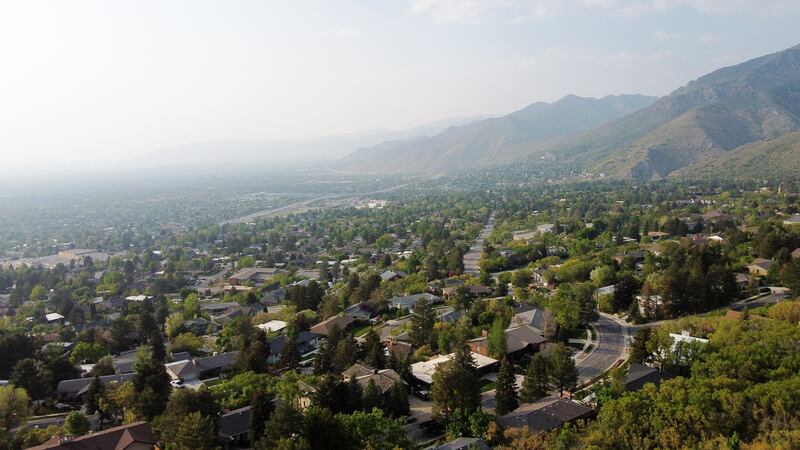A cold front that moved into northern Utah on Monday night dropped temperatures and it feels like the region time-traveled back to mid-May normals, with a smattering of rain, a light dust of snow high in the mountains and gusty winds.
At 11 a.m. Tuesday, compared to 24 hours earlier, temperatures had plunged 22 degrees — a dramatic cooling off.
Residents shouldn’t worry about this June behaving strangely because, as Alex DeSmet, a meteorologist with the National Weather Service in Salt Lake City, explained, this is the way it is supposed to be.
“A lot of people believe it has been a cooler than normal month, but we are actually 1.3 degrees above normal (temperatures) for June so far,” he said. “A lot of people are mentioning how cool it has been, but I think it can be attributed to the fact that the last two Junes were so hot. So last year at this time, we had already had four 103 degree days. And two years ago by this time, we had already had five 100 degree days.”
DeSmet said those temperatures should help people put it in perspective.
“It was much hotter than normal. What we are experiencing so far this June is much closer to normal than what we have experienced over the last couple of years. So I think it is a testament of just hard it was, particularly these last two Junes compared to what’s normal.”
Another example, DeSmet said, was that on June 15, 2021, it hit 107 degrees — tying the all-time record high for that date.
Wildfires, June and watering
DeSmet said a benefit of the near “normal” weather experienced across the state is fewer wildfires. While there have been a few that have popped up — Willard Canyon and near Hurricane — he said it hasn’t been nearly as bad as it had been the past couple of years.
“We’re also delaying the start of the fire season. Some of the valley grasses are turning brown, but if you get above the valley the fuels are still green,” he said. “That is another advantage of it being cooler and wetter is that we don’t have those large wildfires.”
Karl Hunt, spokesman for the Utah Division of Forestry, Fire and State Lands, said Utah has had 137 wildfires so far this year, while in as of June 19 last year, there were 238 wildfires logged. The 10 year average as of June 19 is 271.4 total wildfires, he said.
The “cooler” weather and afternoon rain showers have also alleviated the pressure on outdoor irrigators. Many northern Utah landscapes remain lush and don’t require as much watering, especially in contrast to the last two years.
The Utah Division of Water Resources, through its Slow the Flow program, offers a weekly watering guide for Utah residents.
As the front moves on, DeSmet said it will begin to grow warmer, with temperatures climbing into the 80s for the week. Through the end of the month, he said it looks to be dry while July — because it is still too far out to accurately predict — is on the fence with equal chances of what it will deliver.


